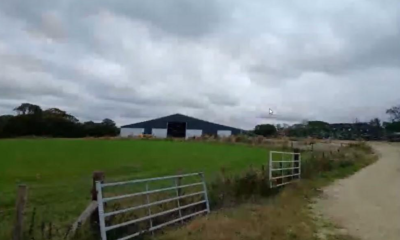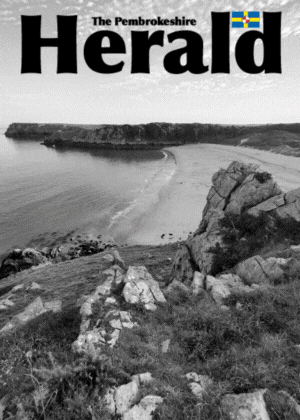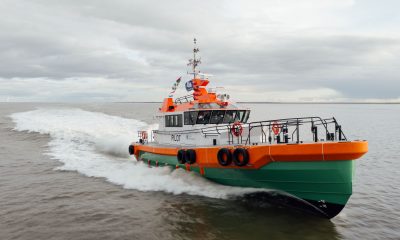News
Pembrokeshire bathing waters: It wasn’t always this way
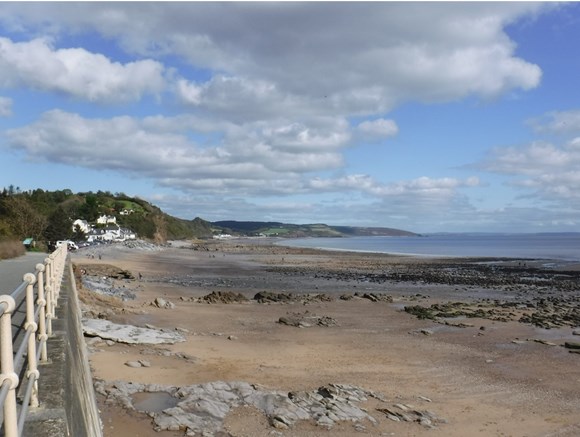
IN THE south western corner of Wales lies Pembrokeshire, a beautiful place that attracts millions of tourists each year and is currently celebrating having some of the cleanest bathing waters in the United Kingdom.
The county has 29 designated bathing waters – almost a third of all those in Wales – and latest results from our Wales Bathing Water Quality Report 2020 show that 27 of those have achieved the highest ‘excellent’ status, with the remaining two achieving ‘good’.
The bathing water sampling season usually runs from the 15 May to 30 September and tests all 105 designated bathing waters around Wales on their water quality. Water samples are taken away, analysed in a specialist laboratory and assessed against a set criteria.
At the end of the season the results will be compiled for each bathing water and used to assess the water as ‘poor’, ‘sufficient’, ‘good’ or ‘excellent’.
This means that local residents and the millions of tourists that flock to Pembrokeshire, can take a dip in the sea safe in the knowledge that they are swimming in some of the cleanest waters in the UK.
But it hasn’t always been that way.
Rod Thomas, a senior environment officer for Natural Resources wales, has lived in Pembrokeshire all his life, and worked as an environment officer within NRW for more than 30 years.
Here Rod tells the story of how strong partnership working and a joint commitment to making a change has made Pembrokeshire the county with the highest number of excellent rated bathing waters in Wales.
Change was no accident
I was born and raised in Pembrokeshire. I love it here and visit our beaches as often as I can.
I’m so proud of what has been achieved, and to be part of the Pembrokeshire Environment Team that has played such a massive role in turning things around for our bathing waters.
This change was no accident. It is the result of a lot of hard work by all parties involved.
Top three issues – tourism, sewage treatment and farming.
Our bathing water issues resulted from a combination of problems, with the top three issues being:
- the impact of tourism
- out-dated sewerage systems
- impacts from agriculture
- Partnership working and Pembrokeshire Beach Strategy
We started to achieve change when organisations pulled together, and we took a partnership approach to the issue. Welsh Water started to make improvements to their waste management systems, while NRW proactively visited areas to identify pollution problems. In addition, Pembrokeshire County Council identified sewer misconnections and enforced dog byelaws to allow dogs on restricted areas of the designated beaches.
In 2018 we formalised this partnership working with the launch of the Pembrokeshire Beach Strategy (2018-2021). This outlines the roles and responsibilities of each organisation and has been our road map to continuous positive change in ensuring that ‘a visit to a Pembrokeshire beach is the best experience that it can be.’
Each beach has a story to tell
Each beach has its own story to tell and demonstrates the range of pollution issues that can affect our bathing waters.
We worked with a local farmer in one area who was keen to help protect the Blue Flag status of a local beach. The farmer changed his practices to ensure that cattle were not allowed to stand in the stream above the beach. By providing an alternative drinking water source, and protecting the water quality of the stream, the beach achieved ‘excellent’ status.
Wiseman’s Bridge
Back in 2011 the bathing water at Wiseman’s Bridge was rated ‘poor’, the lowest standard possible. There was the very real possibility that signage would be required to advise people not to swim there. This was a real challenge for NRW, Pembrokeshire County Council, and all the organisations that it impacted upon, as well as the local economy that relies so heavily on tourism.
The beach is surrounded by caravan sites, as well as properties on private sewerage systems. We carried out a rigourous pollution prevention campaign in the area. We visited all caravan sites, farms and local houses using septic tanks. We found a variety of problems including misconnections.
Several caravan sites had private sewage treatment plants that were old and therefore not working very effectively. The result was poor quality effluent discharging into the stream that led to the beach. We provided site owners with advice and guidance. They took all this on board and went above and beyond what was required, investing in new sewerage treatment systems. The technology includes the use of ultraviolet light treatment plus a reed bed system and results in ‘gin clear’ water.
After seven years of continual improvements this beach now has ‘excellent’ status, a fantastic achievement!
It’s not easy, but change is possible
Improving bathing water quality is not easy, but it is most certainly possible. It requires organisations to work together, chipping away bit by bit over a long period of time. We couldn’t do it without the help of local businesses and landowners.
We will continue to look for opportunities for more improvements to be made. My dream would be for all 29 bathing waters to achieve excellent status.
If we turn our backs on this and stop doing what we’re doing, the quality of bathing waters will decline again. I for one, do not want this to happen.
Stay safe in our waters this summer
If you are planning on visiting some of Wales’ coastlines or inland rivers and lakes this summer, please ensure that you take extra steps to keep yourself and your family safe around water, by assessing the risks before you enter the water and paying more attention to what’s happening around you.
Find out more on how to have a safe and enjoyable time outdoors at Adventure Smart UK, and follow the advice in the Waterside Code and the Wild Swimming Code – part of the Countryside Code family.
The Wales Bathing Water Quality Report 2020 is available to view here, Natural Resources Wales / Wales bathing water quality report 2020.
You can also check the bathing water quality of each designated area here: http://environment.data.gov.uk/wales/bathing-waters/profiles/
Crime
Man accused of Milford Haven burglary and GBH remanded to Crown Court

A MILFORD HAVEN man has appeared in court charged with burglary and inflicting grievous bodily harm, following an incident at a flat in the town earlier this week.
Charged after alleged attack inside Victoria Road flat
Stephen Collier, aged thirty-eight, of Vaynor Road, Milford Haven, appeared before Llanelli Magistrates’ Court today (Friday, Dec 5). Collier is accused of entering a property known as Nos Da Flat, 2 Victoria Road, on December 3 and, while inside, inflicting grievous bodily harm on a man named John Hilton.
The court was told the alleged burglary and assault was carried out jointly with another man, Denis Chmelevski.
The charge is brought under section 9(1)(b) of the Theft Act 1968, which covers burglary where violence is inflicted on a person inside the property.
No plea entered
Collier, represented by defence solicitor Chris White, did not enter a plea during the hearing. Prosecutor Simone Walsh applied for the defendant to be remanded in custody, citing the serious nature of the offence, the risk of further offending, and concerns that he could interfere with witnesses.
Magistrates Mr I Howells, Mr V Brickley and Mrs H Meade agreed, refusing bail and ordering that Collier be kept in custody before trial.
Case sent to Swansea Crown Court
The case was sent to Swansea Crown Court under Section 51 of the Crime and Disorder Act 1998. Collier will next appear on January 5, 2026 at 9:00am for a Plea and Trial Preparation Hearing.
A custody time limit has been set for June 5, 2026.
Chmelevski is expected to face proceedings separately.
News
Woman dies after collision in Tumble as police renew appeal for witnesses

POLICE are appealing for information after a woman died following a collision in Tumble on Tuesday (Dec 2).
Officers were called to Heol y Neuadd at around 5:35pm after a collision involving a maroon Skoda and a pedestrian. The female pedestrian was taken to hospital but sadly died from her injuries.
Dyfed-Powys Police has launched a renewed appeal for witnesses, including anyone who may have dash-cam, CCTV footage, or any information that could help the investigation.
Investigators are urging anyone who was in the area at the time or who may have captured the vehicle or the pedestrian on camera shortly before the collision to get in touch. (Phone: 101 Quote reference: DP-20251202-259.)
News
Greyhound Bill faces fresh scrutiny as second committee raises “serious concerns”

THE PROHIBITION of Greyhound Racing (Wales) Bill has been heavily criticised for a second time in 24 hours after the Senedd’s Legislation, Justice and Constitution (LJC) Committee published a highly critical Stage 1 report yesterday.
The cross-party committee said the Welsh Government’s handling of the legislation had “in several respects, fallen short of the standard of good legislative practice that we would normally expect”.
Key concerns highlighted by the LJC Committee include:
- Introducing the Bill before all relevant impact assessments (including a full Regulatory Impact Assessment and Children’s Rights Impact Assessment) had been completed – a step it described as “poor legislative practice, particularly … where the Bill may impact on human rights”.
- Failure to publish a statement confirming the Bill’s compatibility with the European Convention on Human Rights (ECHR). The committee has recommended that Rural Affairs Minister Huw Irranca-Davies issue such a statement before the Stage 1 vote on 16 December.
- Inadequate public consultation, with the 2023 animal-licensing consultation deemed “not an appropriate substitute” for targeted engagement on the specific proposal to ban the sport.
The report follows Tuesday’s equally critical findings from the Culture, Communications, Welsh Language, Sport and International Relations Committee, which questioned the robustness of the evidence base and the accelerated legislative timetable.
Industry reaction Mark Bird, chief executive of the Greyhound Board of Great Britain (GBGB), described the two reports as leaving the Bill “in tatters”.
“Two consecutive cross-party Senedd committees have now condemned the Welsh Government’s failures in due diligence, consultation and human rights considerations and evidence gathering,” he said. “The case for a ban has been comprehensively undermined. The responsible path forward is stronger regulation of the single remaining track at Ystrad Mynach, not prohibition.”
Response from supporters of the Bill Luke Fletcher MS (Labour, South Wales West), who introduced the Member-proposed Bill, said he welcomed thorough scrutiny and remained confident the legislation could be improved at later stages.
“I have always said this Bill is about ending an outdated practice that causes unnecessary suffering to thousands of greyhounds every year,” Mr Fletcher said. “The committees have raised legitimate procedural points, and I look forward to working with the Welsh Government and colleagues across the Senedd to address those concerns while keeping the core aim of the Bill intact.”
A Welsh Government spokesperson said: “The Minister has noted the committees’ reports and will respond formally in due course. The government supports the principle of the Bill and believes a ban on greyhound racing is justified on animal welfare grounds. Work is ongoing to finalise the outstanding impact assessments and to ensure full compatibility with the ECHR.”
The Bill is scheduled for a Stage 1 debate and vote in plenary on Tuesday 16 December. Even if it passes that hurdle, it would still require significant amendment at Stages 2 and 3 to satisfy the committees’ recommendations.
-

 Crime3 days ago
Crime3 days agoDefendant denies using Sudocrem-covered finger to assault two-month-old baby
-

 Crime2 days ago
Crime2 days agoPembroke rape investigation dropped – one suspect now facing deportation
-

 News2 days ago
News2 days agoBaby C trial: Mother breaks down in tears in the witness box
-

 Crime15 hours ago
Crime15 hours agoProsecution delivers powerful closing speech in Christopher Phillips trial
-

 Crime3 days ago
Crime3 days agoLifeboat crew member forced to stand down after being assaulted at Milford pub
-

 Crime4 days ago
Crime4 days agoDefendant denies causing injuries to two-month-old baby
-

 Crime2 days ago
Crime2 days agoMother admits “terrible idea” to let new partner change her baby’s nappies alone
-
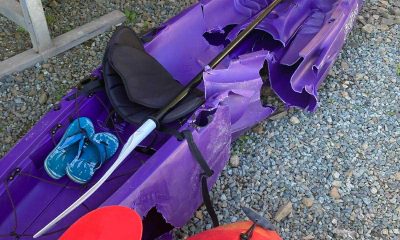
 Crime4 days ago
Crime4 days agoPembrokeshire haven master admits endangering life after speedboat collision







